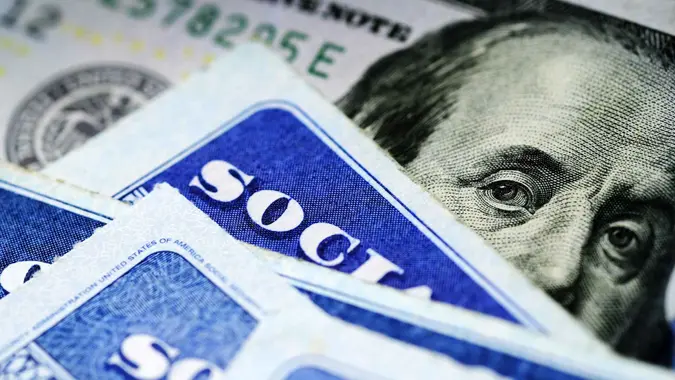How You Can Grow Your Retirement Savings in 10 Years, According to Banking Experts

Commitment to Our Readers
GOBankingRates' editorial team is committed to bringing you unbiased reviews and information. We use data-driven methodologies to evaluate financial products and services - our reviews and ratings are not influenced by advertisers. You can read more about our editorial guidelines and our products and services review methodology.

20 Years
Helping You Live Richer

Reviewed
by Experts

Trusted by
Millions of Readers
Your retirement might be many years down the line, or it might be only 10 years away. Either way, you want to make sure that you are saving for the time when you’ll be done working and that when you do clock out from your job for the last time, you have enough money to live on from that point forward.
The good news is that there are lots of ways that you can grow your retirement utilizing your local bank. The even better news is that you can see significant increases to your account in the next 10 years, whether you are planning to retire in 2034 or beyond.
GOBankingRates asked some banking experts about how to grow your retirement savings over 10 years — here’s what they had to say.
Getting Your Money To Work For You
The concept of a bank might seem like a big safe where your money sits until you need it. In reality, your bank is an incubator for letting your money — including your retirement savings — grow if you make it work for you.
“Developing a personalized investment strategy is key to building your wealth and sustaining it through retirement,” said Nick Campanale, CFP, private wealth financial planning manager at Citizens Wealth Management. “The secret to early retirement savings lies in compound interest, which enables your savings to grow not just from your initial investment, but also from the accumulating interest over time.”
Campanale noted that it is also important to consider your risk tolerance and how evolving circumstances might impact your investment portfolio. Working with your bank can be strategic in figuring out how you want to build up your retirement account and what your comfort level is with risk.
“Continually checking in allows for strategic adjustments to be made as you continue to grow and protect your wealth,” Campanale explained. “Your risk appetite may shift due to a variety of factors such as significant life events like marriage, childbirth and eventual retirement. Periodically reassessing the investment assets underpinning your strategy will confirm they still fit your overall financial goals.”
Finding Safe Investments
Setting up a retirement plan like a 401(k) and portfolios that are aggressively earning over the course of one’s career can be an excellent choice during your working years. However, that can change the closer you get to retirement, and a financial planner at a local bank can help make adjustments that continue to earn without as much risk.
“As savers get closer to retirement, they generally want to be more conservative with their investments,” said Ben McLaughlin, a finance expert and president of Raisin. “Cash investments can make up a safe part of your retirement portfolio. CDs are insured and guaranteed investments, as long as you abide by federal insurance guidelines.”
Creating Trust With a Financial Advisor
Establishing a relationship with a financial advisor will ensure that all steps and measures are taken to protect your financial assets and build wealth, according to Mary Hines Droesch, the head of product for consumer, business and wealth management banking and lending at Bank of America.
“Seeking advice from a financial professional is very helpful, especially when you need to create a plan to manage the complexities and unexpected events that arise as you grow your wealth,” Droesch said.
Opening a High-Yield Savings Account
Having a savings account for emergencies or large purchases is useful; however, the interest rate might not be growing your money as fast as other investments. The problem is that if you need a significant amount of cash from those investments, you can be penalized for withdrawing early. One solution is opening a high-yield savings account.
“People might not automatically think about high-yield savings accounts as part of your overall retirement savings plan, but they can serve an important function,” McLaughlin said.
“Ensuring that you have a nest egg of liquid cash to draw upon during life’s unexpected situations, like a major home repair or job loss, means that you don’t have to pull from other investments like CDs or bonds, which may incur penalties that eat into your returns,” McLaughlin added.
Maximizing Retirement Contributions
Your bank has financial planners and strategists who can help you make the most of not just your money in savings for retirement but also contributions made by you and your employer into retirement plans.
“Make sure to max out your (and your employer’s) contributions and review your open enrollment retirement choices each year,” Campanale said. “Contributions should be at least enough to obtain the maximum employer match under your company plan, or, in the case of surplus income, maximized under the Internal Revenue Code.”
 Written by
Written by  Edited by
Edited by 

























